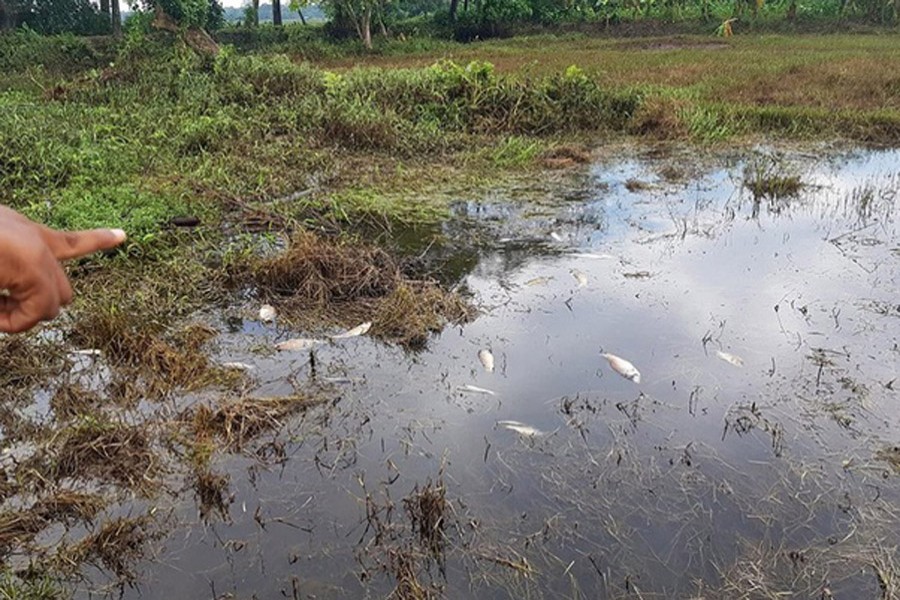Industrial wastes polluting South Asia’s largest natural fish breeding ground Halda, says panel

Published :
Updated :

The Halda River, the biggest natural fish breeding ground in South Asia, is facing ‘severe’ pollution by industrial wastes carried in by flash floods, says Halda River Saving Committee.
The committee chairman and zoology teacher at Chattogram University Manzurul Kibria termed it a ‘red signal’ for Halda River at a news conference held in Chattogram Press Club on Friday.
The Halda is getting contaminated with industrial wastes due to heavy downpour and flash floods for last few days. The industrial wastes have made their way to ponds and farming lands at nearby neighbourhoods, killing fishes as well as harming the agricultural lands, committee members said.
“The pollution began from Jun 19 and it was followed by dead fishes surfacing on its basins, as well as on Halda River itself in next two days,” a worried Manzurul said.
The water samples from different parts of the river showed low level of oxygen and high degree of ammonia than required, when tested, according to him.
In the water samples from Halda, 0.21 to 1.0mg of diluted oxygen was found against the required 5mg in every litre of water. Also, Khandakia canal, which is next to the river, had 100 times more diluted ammonia than required.
Decrease of diluted oxygen and toxicity of ammonia are the reasons behind the death of fishes in Halda River, Manzurul believed.
“There has been little oxygen in the water on the surface but not near the river bed, leaving more fishes to die at the bottom.”
The Halda researcher said a record number of fish spawned this year in Halda despite different pollutions that gave the people who depend on it for their livelihoods a ray of hope. However, the severe pollution within three months have spelled a disaster and left them in anxiety.
The Halda River Saving Committee had collected water samples and sample of dead fish from the river from Jun 21 to Jun 25 with the help of Chattogram University Halda River Research Laboratory and other experts.
Manzurul drew attention to four possible sources of pollution in the press conference based on that.
He held the dumping of industrial wastes from Hathazari 100 MW Peaking Power Plant, Asian Paper Mills of Nandir Haat, and from the poultry farms that have mushroomed in Chowdhuryhat, Fateyabad, Borodighi, Nondir Hat for the pollution, said a bdnews24 report.
Also, he attributed the contamination to filling up of Bamanshahi canal during the construction of Ananya Residential Area of Chattogram Development Authority or CDA that reclaimed a few kilometres of land.
Earlier, the industrial wastes from Oxygen to Kulgaon neighbourhood used to be carried to Karnaphuli River through Bamanshahi canal. As the cananl has been filled up, the heavy downpour created a reverse flow that took the water contaminated with industrial wastes to nearby villages in Hathazari upazila.
The committee made some recommendations to make Halda River pollution-free.
These include mandatory installation of Effluent Treatment Plant or ETP in Hathazari 100 MW Peaking Power Plant, Asian Paper Mills and other industrial factories along with a stop to the dumping of poultry waste in the dead canal of Hathazari.
Adviser to Halda River Saving Committee and journalist Shamsul Haque Haideri, Vice-Chairman Chowdhury Farid and General Secretary Mohammed Ali were present at the media call.


 For all latest news, follow The Financial Express Google News channel.
For all latest news, follow The Financial Express Google News channel.